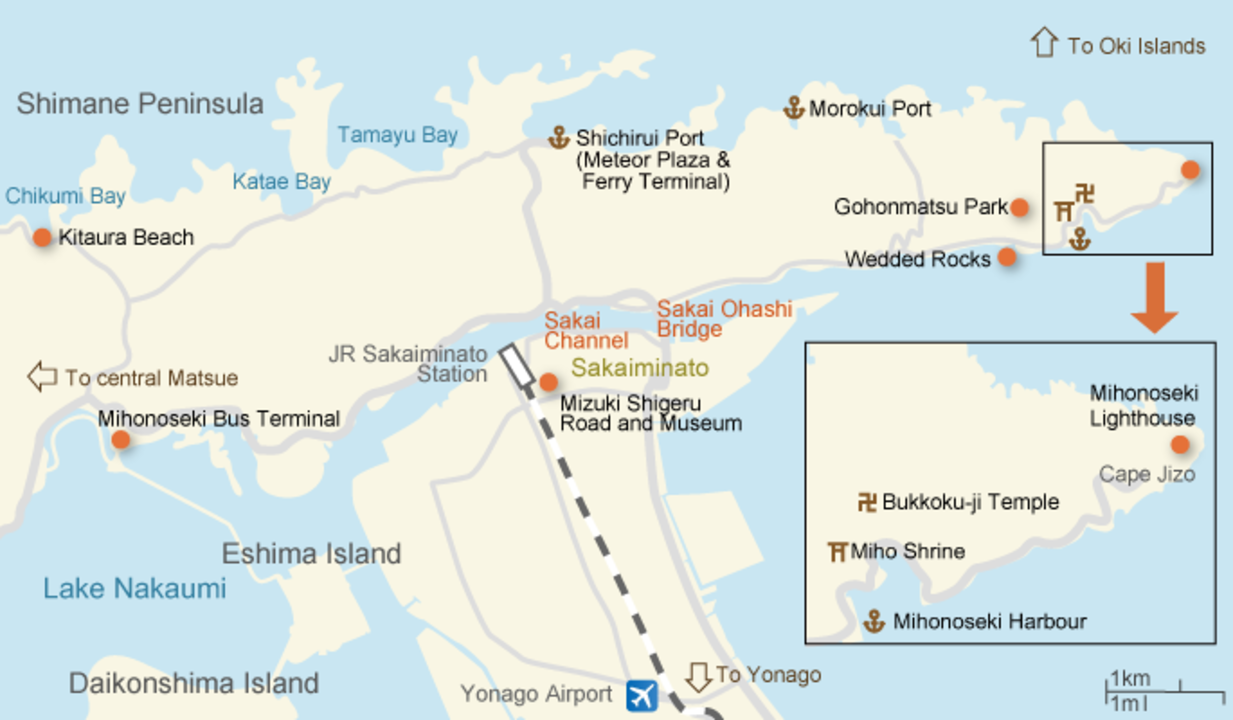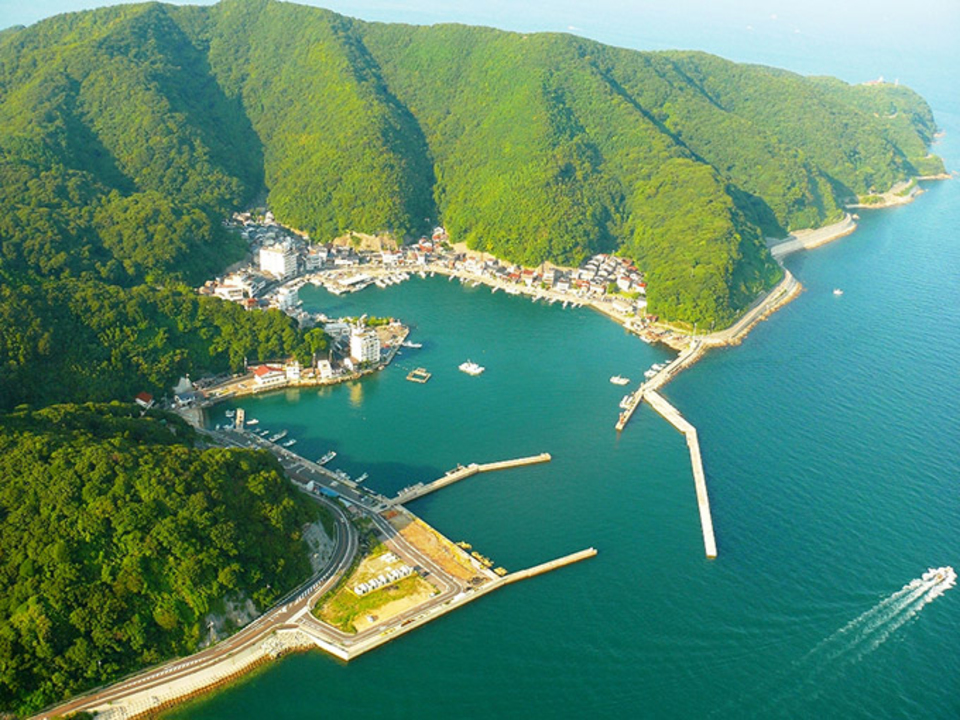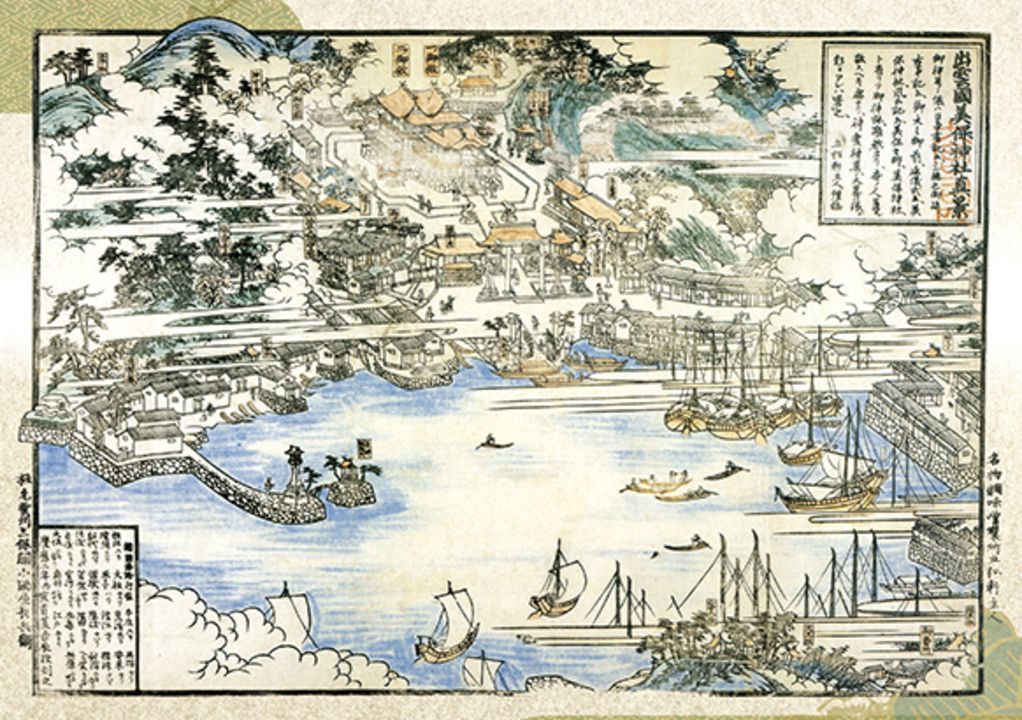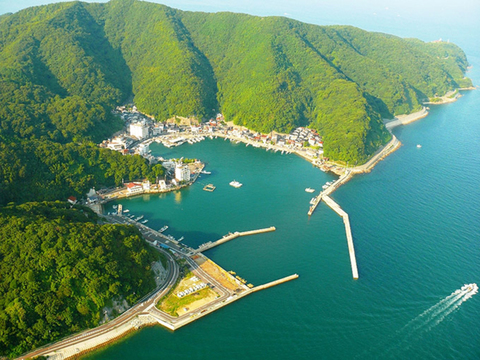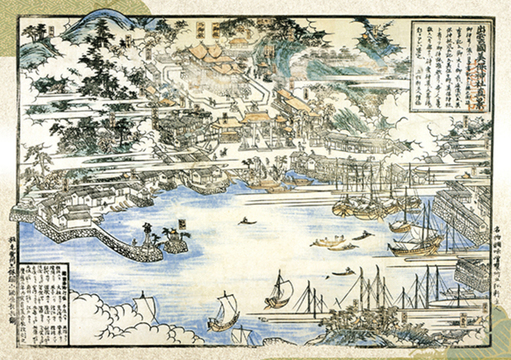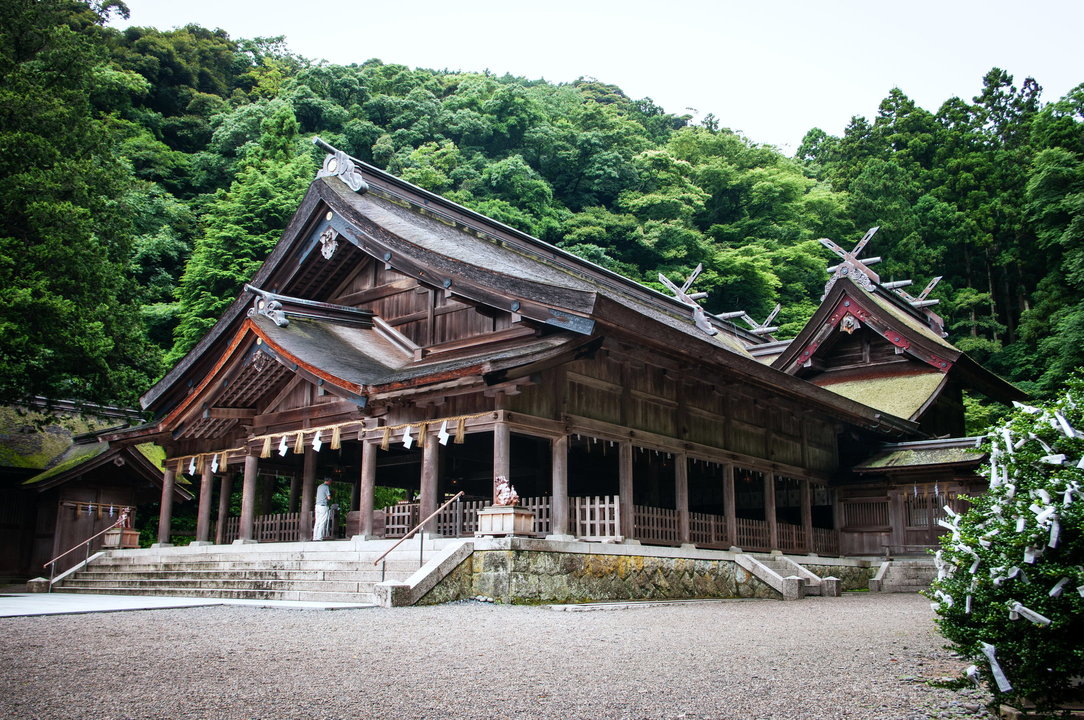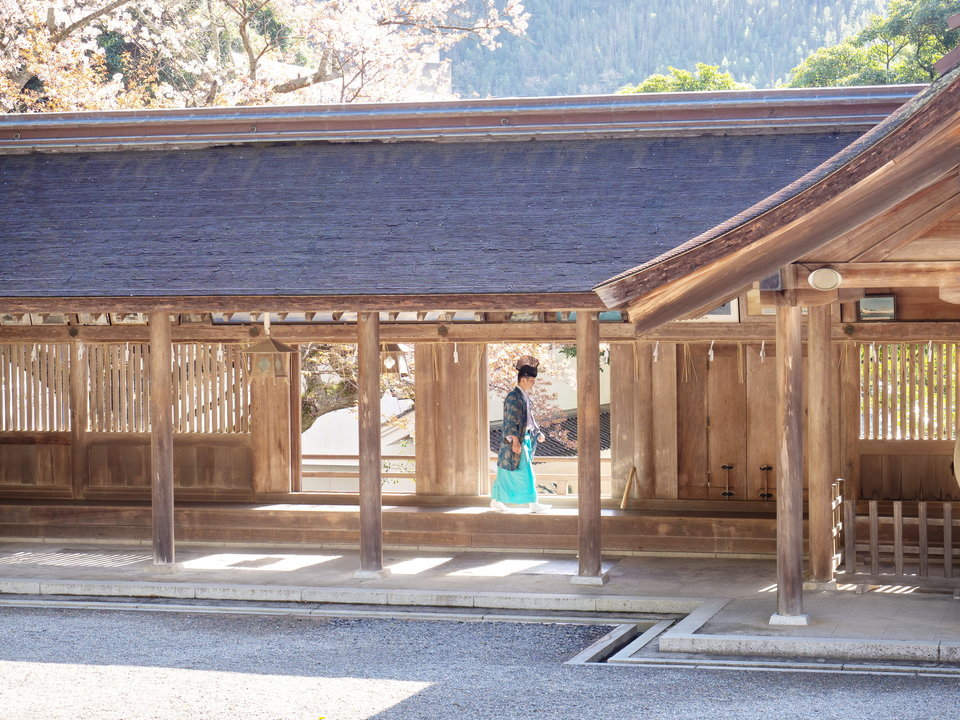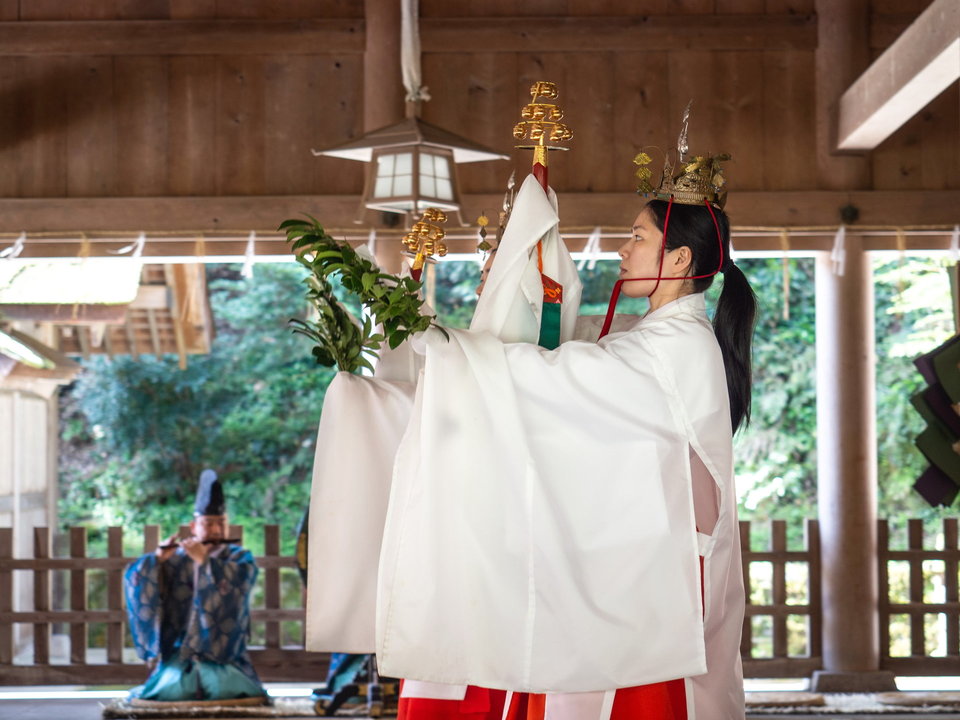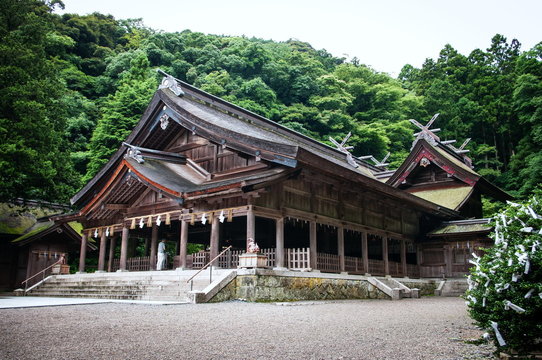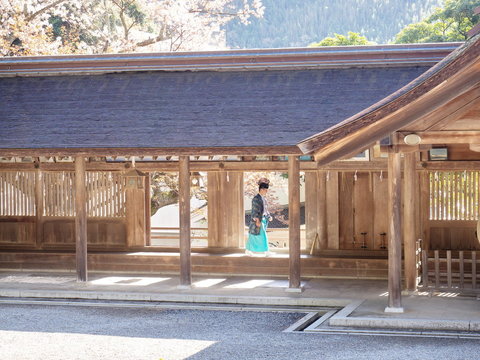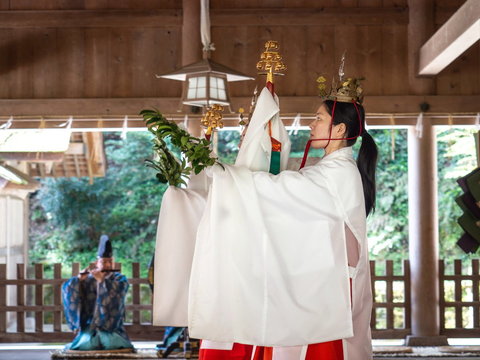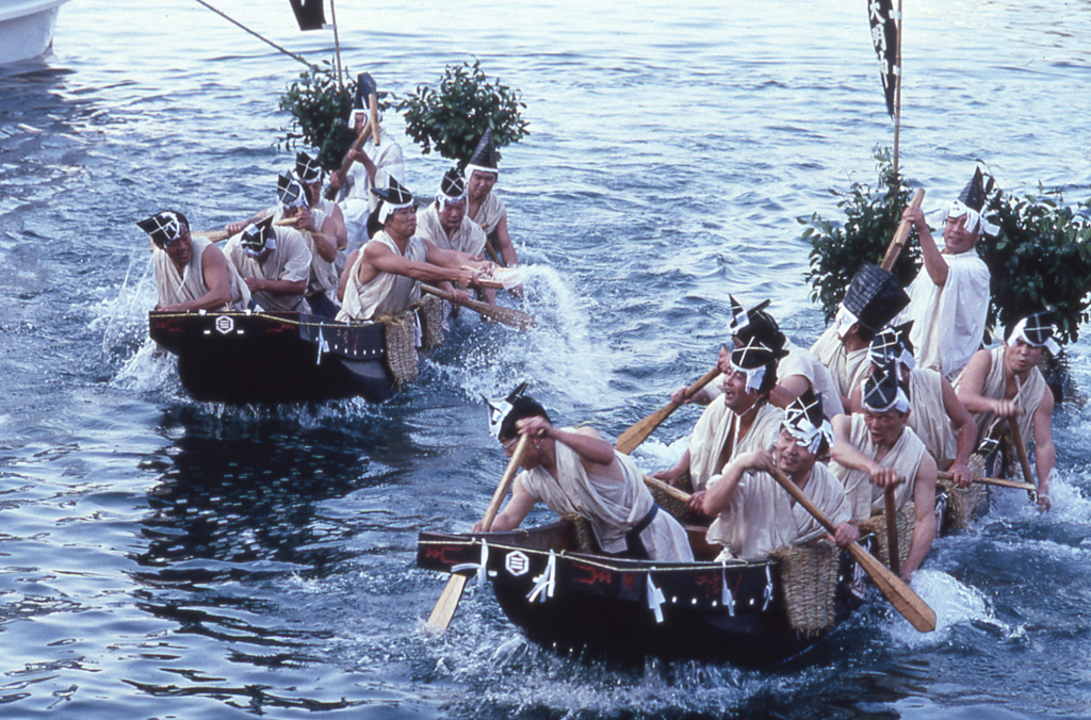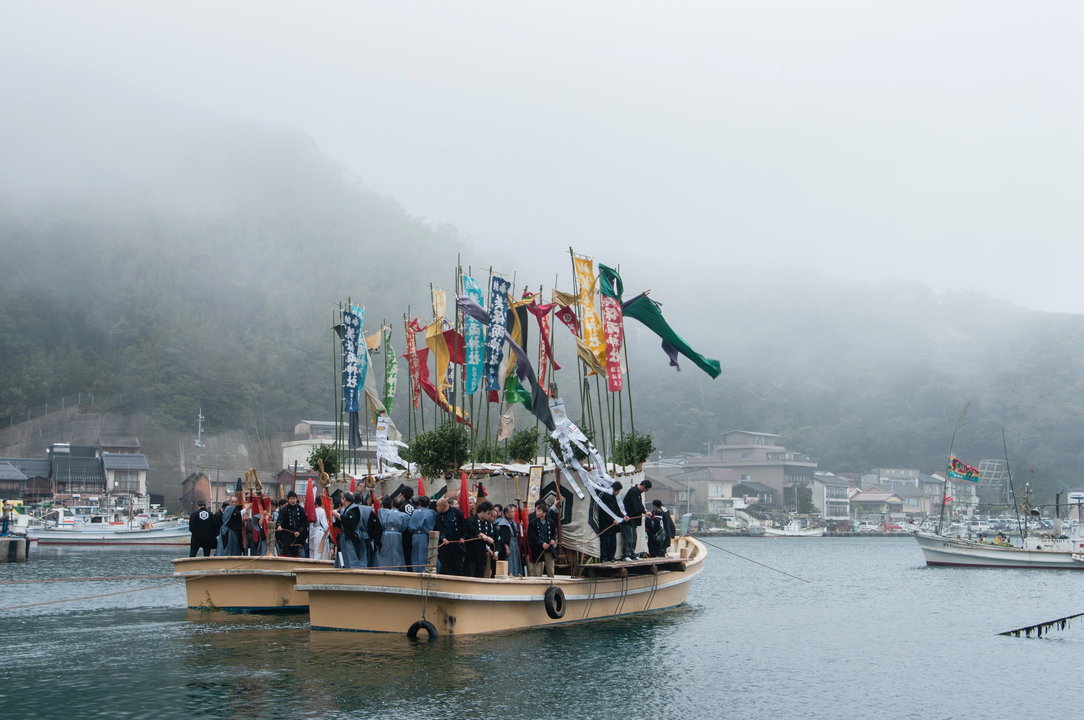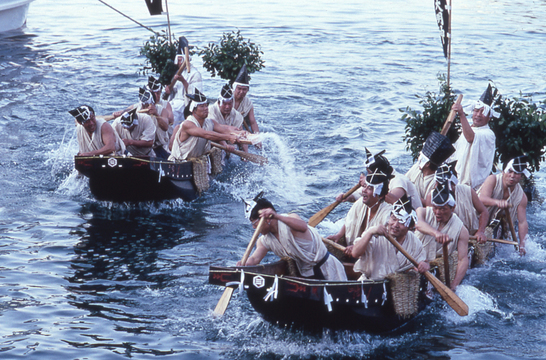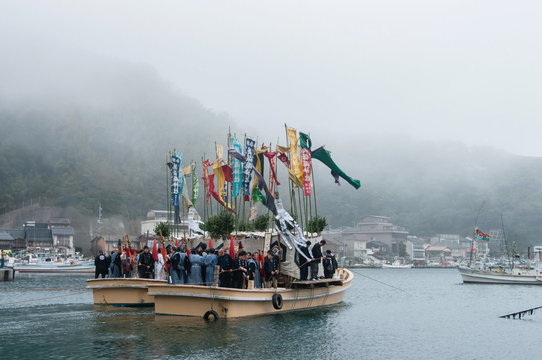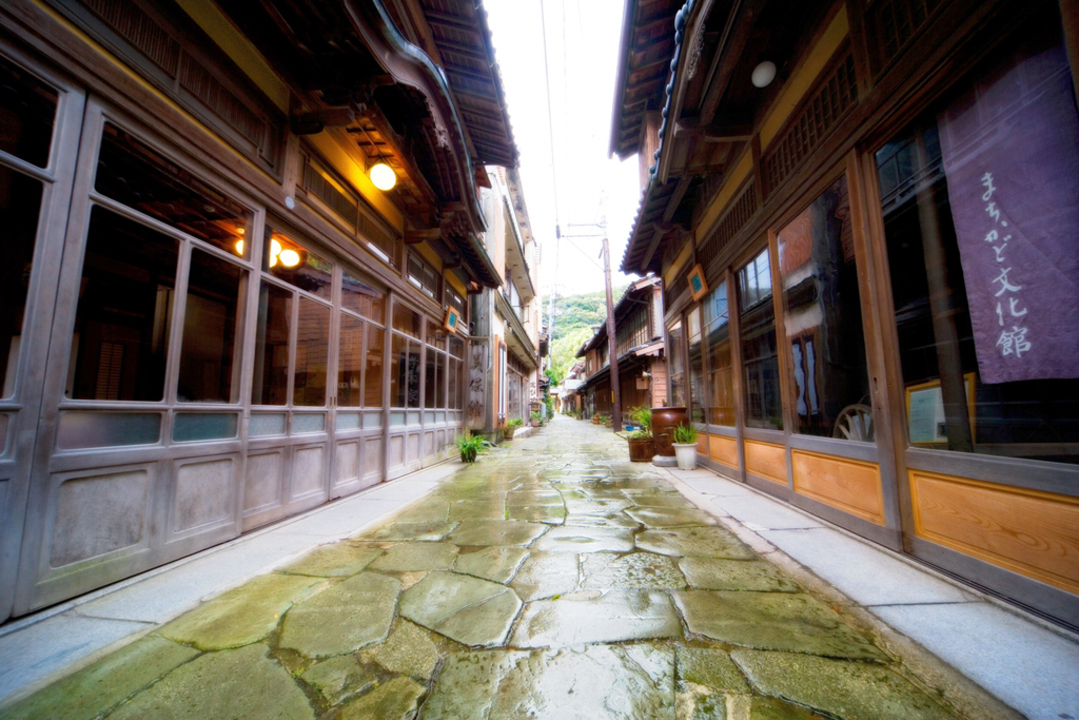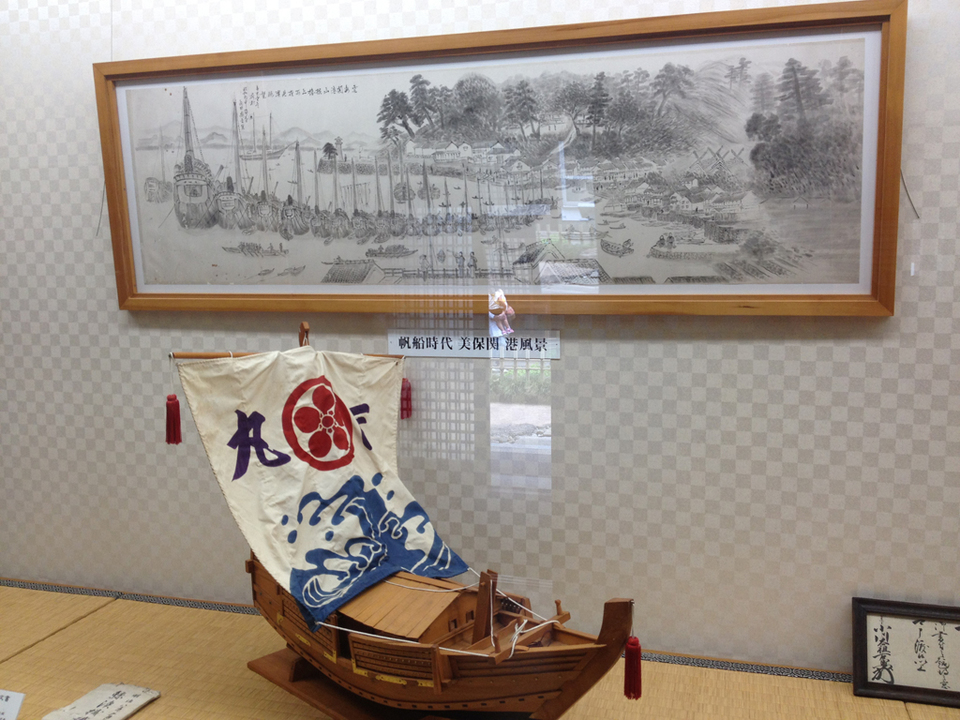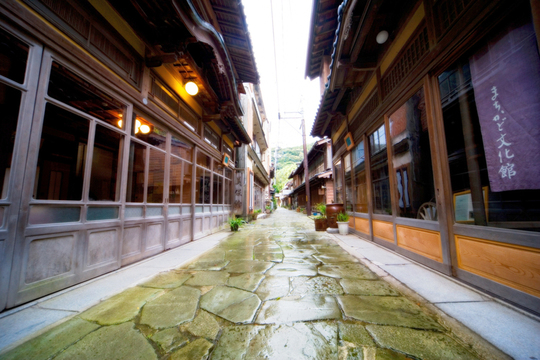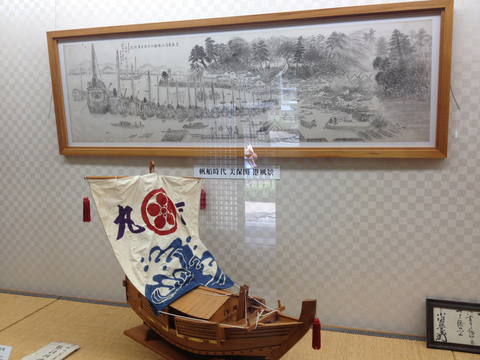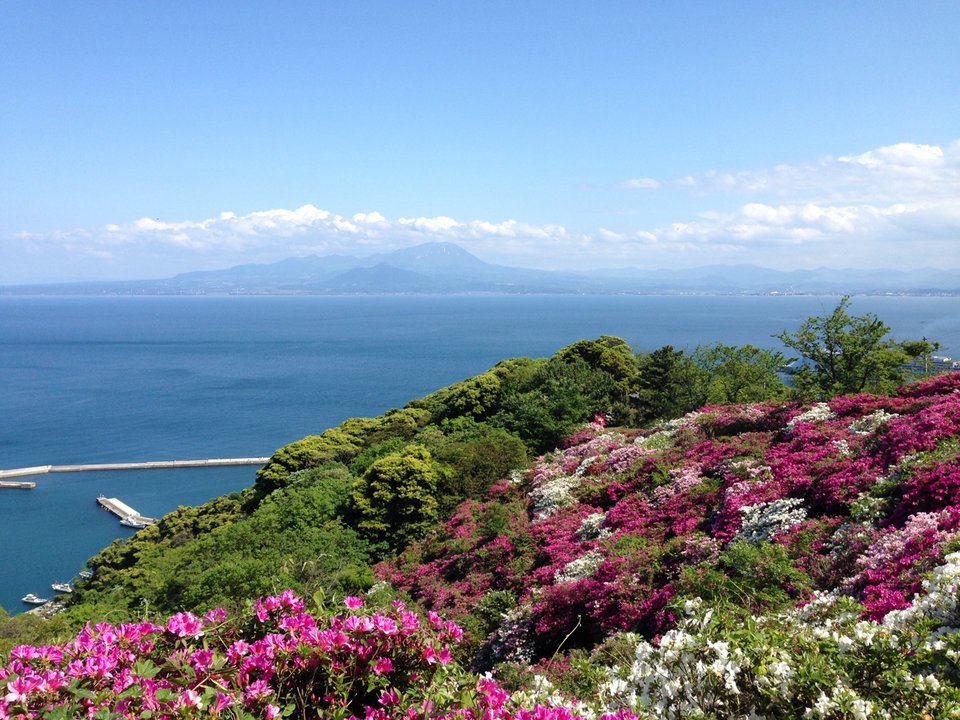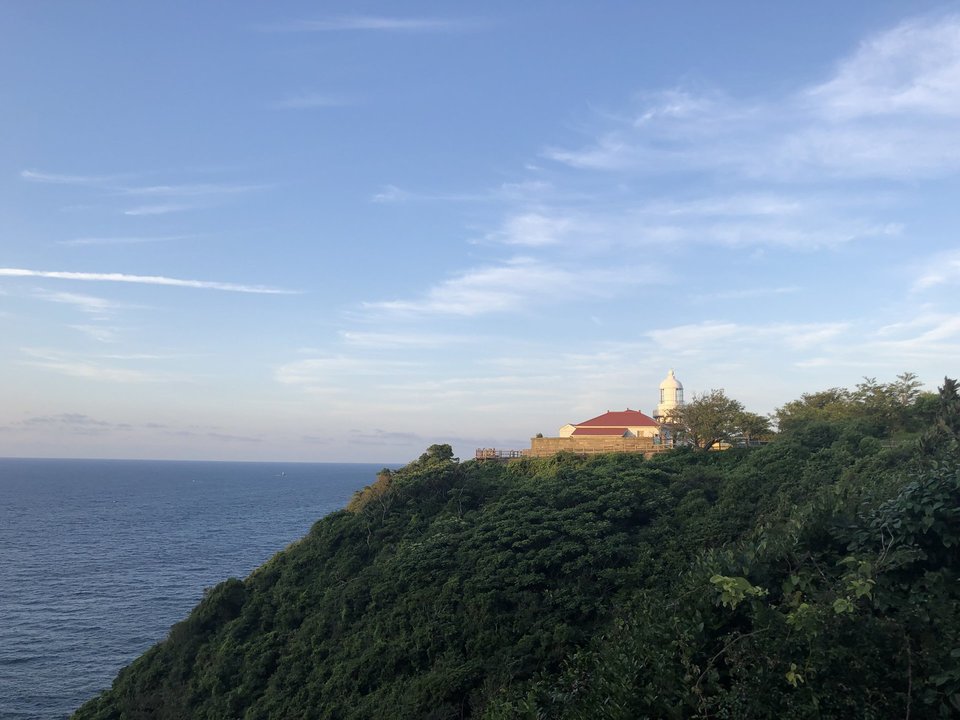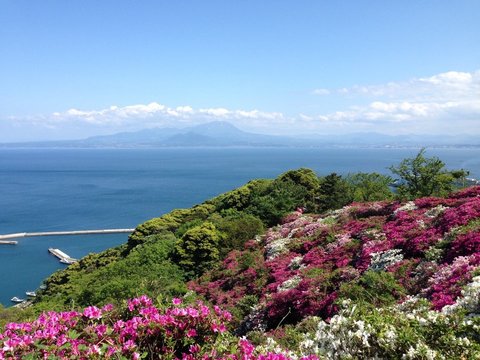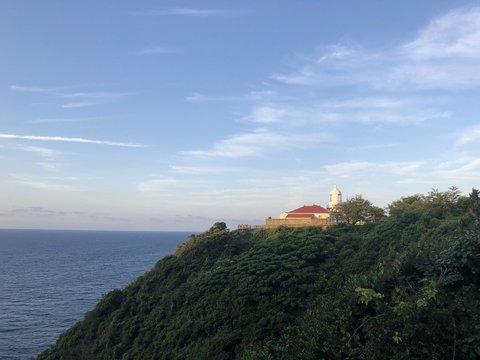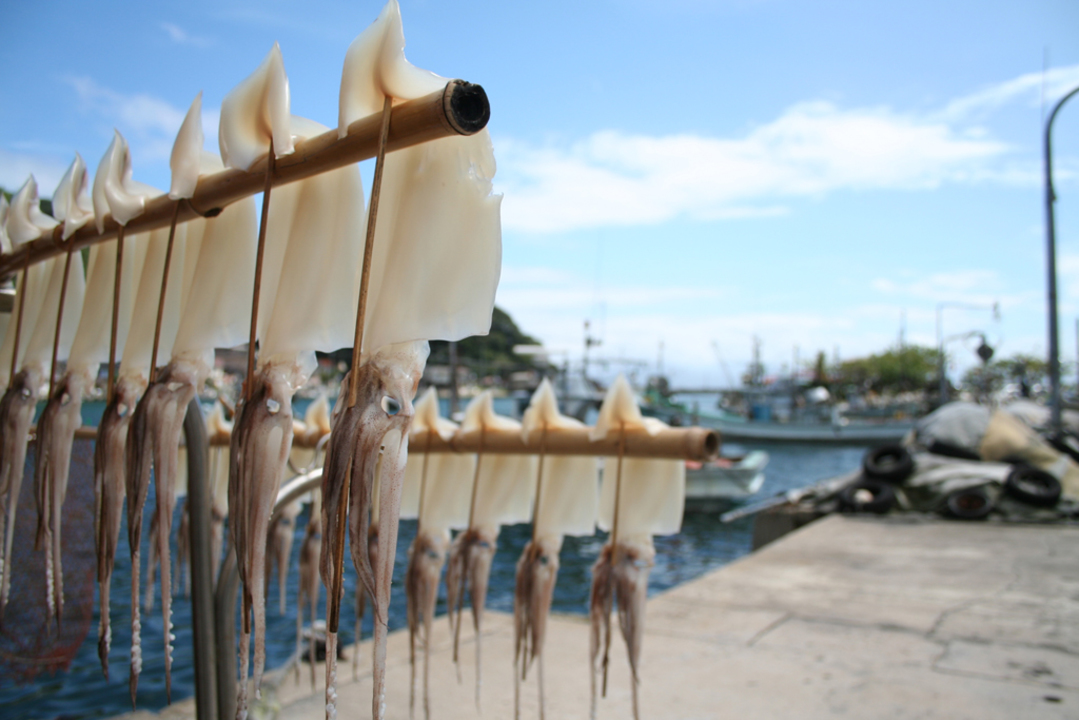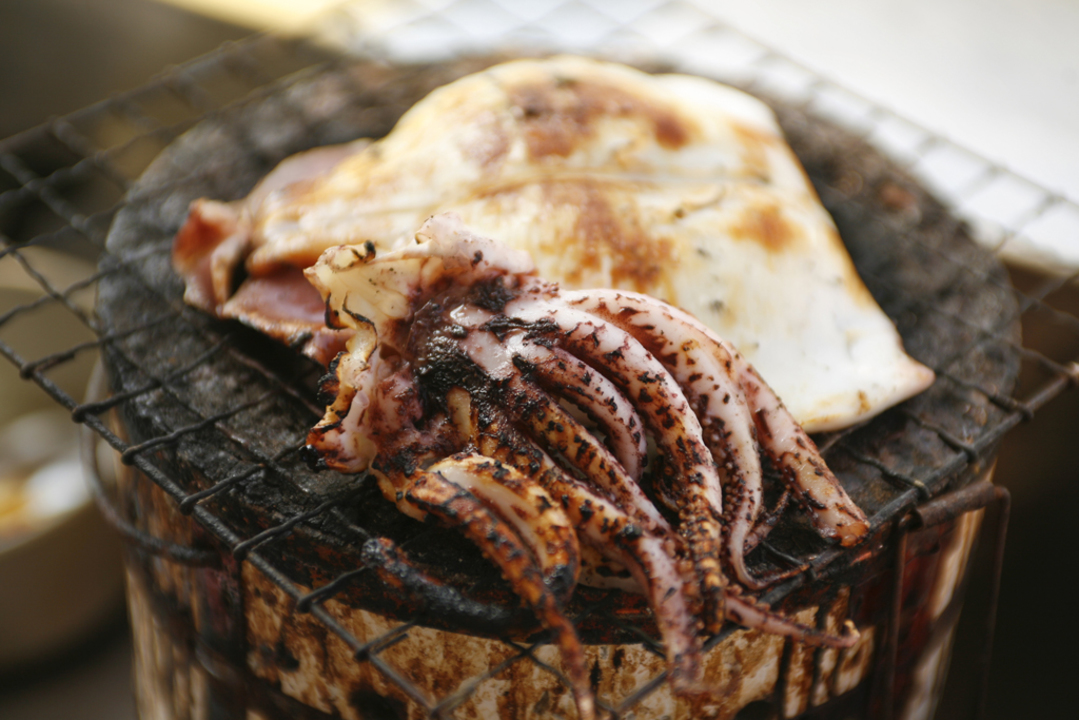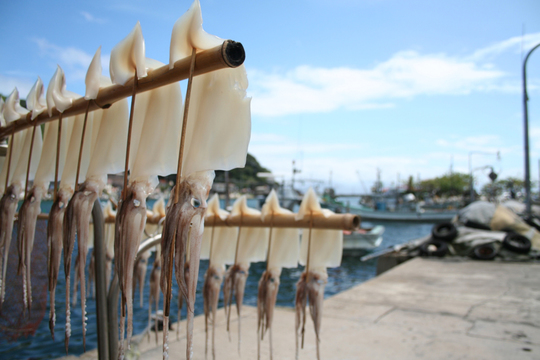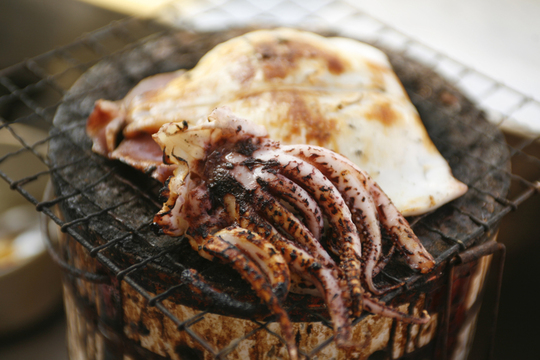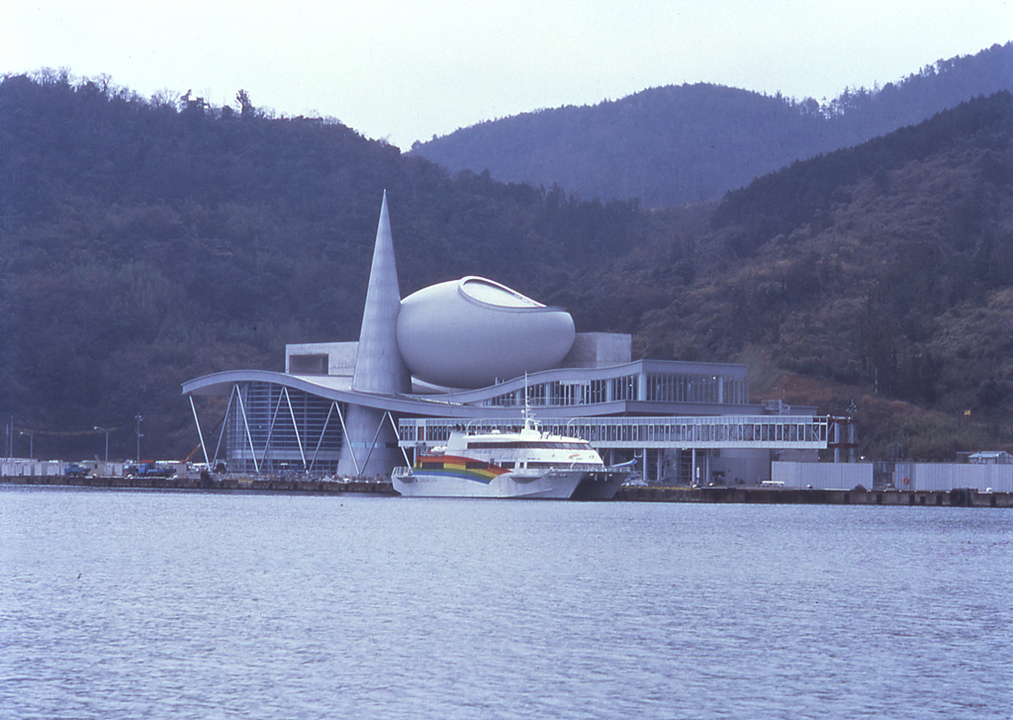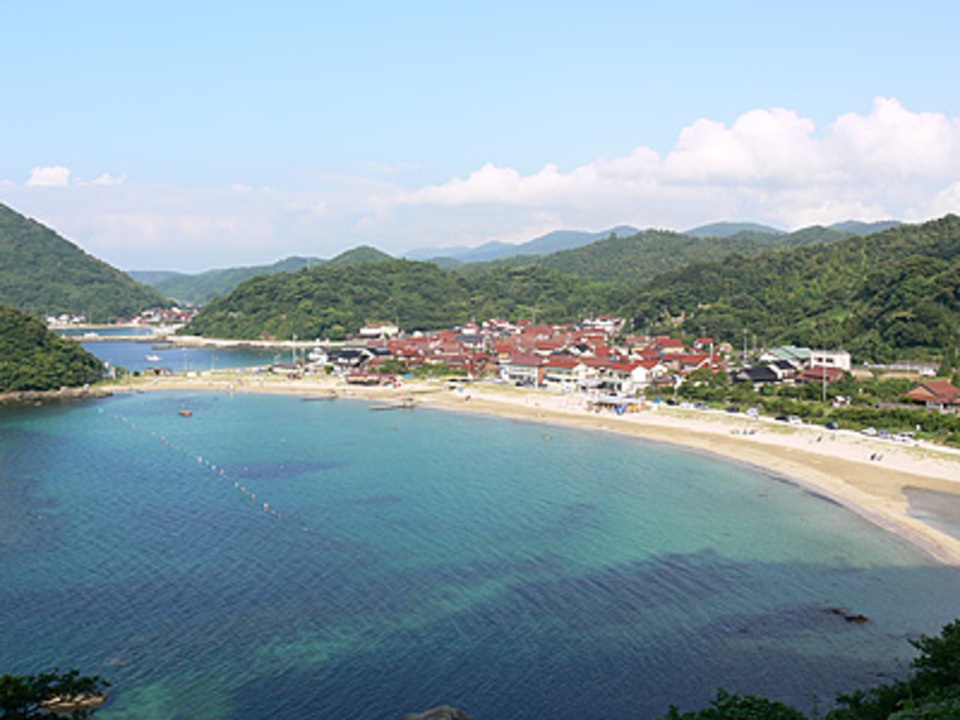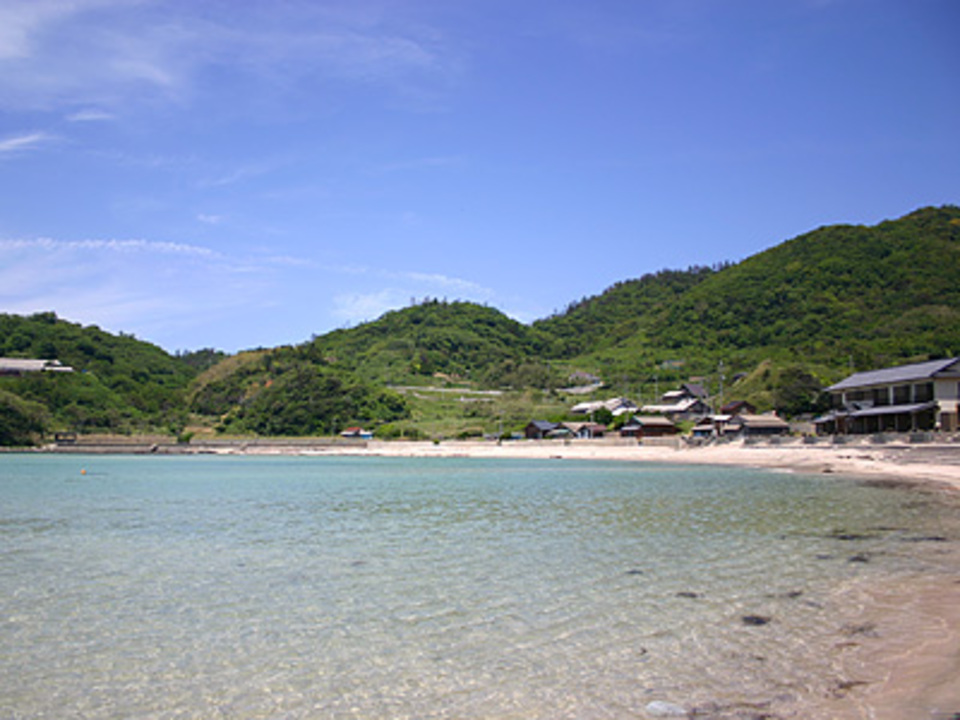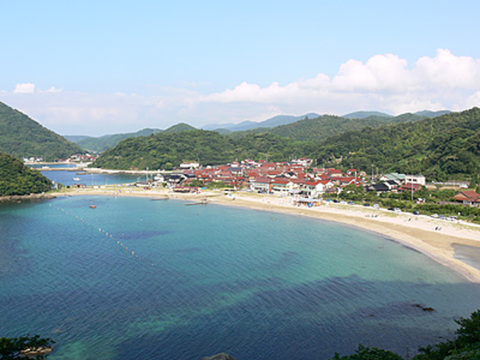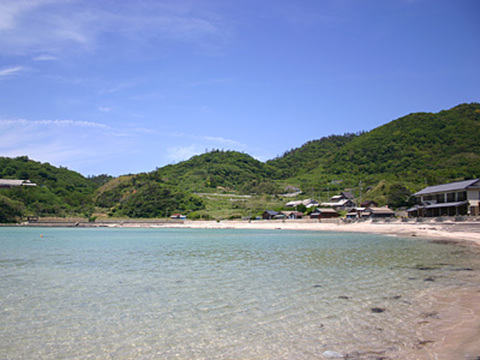Mihonoseki
Mihonoseki Harbour – 美保関
Though access by public transportation is limited, the small historic harbour of Mihonoseki is well worth a visit. Mihonoseki flourished as a port for Kitamae-bune ships carrying goods to places like Osaka and Tokyo during the Edo period. Mihonoseki has also been an important connecting point between Japan and the Asian continent.
Surrounded by an abundance of nature and offering a wonderful view of Mt. Daisen, Mihonoseki remains just as Lafcadio Hearn described it many decades ago. Read the following articles to learn more about this small harbour town.
Surrounded by an abundance of nature and offering a wonderful view of Mt. Daisen, Mihonoseki remains just as Lafcadio Hearn described it many decades ago. Read the following articles to learn more about this small harbour town.
| Access | Located 30km from central Matsue, Mihonoseki Harbour can be reached by Ichibata Bus from JR Matsue Station (Manbara Line) (Japanese) . Change at Mihonoseki Bus Terminal to a Mihonoseki Community Bus (Japanese) (TEL: 0852-72-3119). 80 minutes. |
|---|
Miho Shrine – 美保神社
The primary feature of Mihonoseki Harbour is the magnificent Miho Shrine. The sacred torii gate stands close to the old port as if inviting the fishing boats to enter. This very old shrine is dedicated to Ebisu, the god of fishermen and business prosperity; and Mihotsuhime, the goddess of abundant harvest. The shrine’s architecture is notable for its two main halls (honden). Most shrines only have one honden.
Mihonoseki’s history is closely tied to Ebisu, who is said to enjoy fishing on the shores of the peninsula. Miho Shrine is the head shrine to approximately 3000 others throughout Japan dedicated to Ebisu. Ebisu is another name for Kotoshironushi, a son of Ôkuninushi, the deity of matchmaking (En-musubi) who is enshrined on the opposite end of the Shimane Peninsula at Izumo Taisha Grand Shrine, one of the largest and most important shrines in Japan.
Mihonoseki’s history is closely tied to Ebisu, who is said to enjoy fishing on the shores of the peninsula. Miho Shrine is the head shrine to approximately 3000 others throughout Japan dedicated to Ebisu. Ebisu is another name for Kotoshironushi, a son of Ôkuninushi, the deity of matchmaking (En-musubi) who is enshrined on the opposite end of the Shimane Peninsula at Izumo Taisha Grand Shrine, one of the largest and most important shrines in Japan.
Mythology & rituals – 神話・神事
The harbour of Mihonoseki is home to many rituals. Two of the most important ones, depicted in the Kojiki ("Record of Ancient Matters"), are part of the Kuniyuzuri myth in which Ebisu agrees to concede his father’s land of Izumo to the heavenly gods. The Morotabune Ritual (December 3rd) is a race between two traditional dug-out canoes re-enacting the coming of the heavenly messengers. The Aofushigaki Ritual (April 7th) re-enacts the scene where Ebisu decides to disappear from the visible world by hiding in the sea. Many other myths are related to Mihonoseki, such as the Kunibiki myth of how a god pulled land from other shores to create the Shimane Peninsula.
A walk through history – 歴史を歩く
The Aoishi-datami paved street (literally meaning the blue-stoned tatami street because of its sheen after rainfall) is a pathway in the harbour neighbourhood reminiscent of the Edo Period. Having welcomed many sailors in the past as well as famous writers in more recent years, the narrow street is lined with travel inns and liquor shops. One of the inns, Miho-kan, is designated as a National Cultural Asset. It was built in the 17th century and its interior design is of particular interest. [See website].
Nearby, there is an archives museum with free admission where Mihonoseki’s history and several relics are displayed. Bukkoku-ji Temple is a few steps further, and is home to five wooden Buddhist statues that were made in the Heian Period and designated as an Important National Assets. This temple was where two emperors stayed while waiting to be exiled to the Oki Islands. You can only see the statues on Wednesdays and weekends, from 9:00 to 15:00 (¥300).
Nearby, there is an archives museum with free admission where Mihonoseki’s history and several relics are displayed. Bukkoku-ji Temple is a few steps further, and is home to five wooden Buddhist statues that were made in the Heian Period and designated as an Important National Assets. This temple was where two emperors stayed while waiting to be exiled to the Oki Islands. You can only see the statues on Wednesdays and weekends, from 9:00 to 15:00 (¥300).
Scenic beauty – 美しい自然
Located on a hill by Mihonoseki Harbour, Gohonmatsu Park offers you a breath-taking view of the surroundings. It is famous for its thousands of azaleas that bloom in May. From there, you can follow a nature trail to Mihonoseki Lighthouse, located on Cape Jizo, at the easternmost tip of the Shimane Peninsula. Also accessible by road from the harbour, the lighthouse was built in 1898 and is noted as a historical lighthouse. There is a restaurant where you can enjoy a meal made from fresh ingredients while looking out over the expansive view of the Oki Islands (visible on a clear day) and the blue sea speckled with fishing boats and seagulls.
| Access |
The trail to Gohonmatsu Park starts at the entrance of Mihonoseki Harbour. It takes about 20 minutes to get to the top of the 100-metre-high hill. The nature trail that goes to Mihonoseki Lighthouse takes roughly 2 hours to walk. Alternatively, the lighthouse is 2km away from the harbour by car. Mihonoseki Lighthouse Cafe (Japanese) is closed on Thursdays. Tel: 0852-73-0211. |
|---|
Treat yourself – グルメ
Dried squid and grilled squid are the must-try items at Mihonoseki Harbour’s food stalls. Also, the Aoishi-datami paved street is home to a soy sauce shop called Taikoya Shoyu (Japanese), which has been acclaimed by the gastronome Kitaoji Rosanjin. You can even try soy sauce flavoured ice-cream! You can find a list of what and where to eat here (in Japanese).
Shichirui Port (Meteor Plaza) – メテオプラザ七類港
| Access | 45mn by Ichibata Bus from JR Matsue Station, or by community bus from Mihonoseki Bus Terminal (25mn). The Meteor Plaza Museum is open from 9:00 to 17:00. Closed on Wednesdays or the following day in case of a National Holiday. TEL: 0852-72-3939. Museum admission fee: ¥500 for one adult. *Link to Meteor Plaza website, in Japanese. *Link to Oki Kisen Ferry website, in Japanese. |
|---|
Coastline and beaches – 海岸と海水浴場
Covering an area of 20km from east to west and 6km from north to south, the district of Mihonoseki is home to beautiful coastlines with many beaches, especially on its northern coastline. The most beautiful and easiest beach to access is Kitaura Beach. From JR Matsue Station, change at Mihonoseki Bus Terminal to take the community bus (Kasaura Line)(Japanese). Mihonoseki, as the home of the sea deity Ebisu, is also a wonderful spot for fishing.
Access and useful links - アクセス・リンク
Access
Mihonoseki Harbour can be accessed by bus from JR Matsue Station (Manbara Line) (Japanese). Change at Mihonoseki Bus Terminal to a Mihonoseki Community Bus (Japanese)(Tel: 0852-72-3119). 80 minutes.
Another way to visit Mihonoseki would be by car or taxi.[See Moving around]
Links
Lodging
Pamphlets and maps
Mihonoseki Harbour can be accessed by bus from JR Matsue Station (Manbara Line) (Japanese). Change at Mihonoseki Bus Terminal to a Mihonoseki Community Bus (Japanese)(Tel: 0852-72-3119). 80 minutes.
Another way to visit Mihonoseki would be by car or taxi.[See Moving around]
Links
- Sightseeing in Mihonoseki – Japanese website ›› Click here
Lodging
- See our Lodging section.
- More info on Mihonoseki Sightseeing Japanese Website
Pamphlets and maps
- Mihonoseki Harbour’s sightseeing spots (in Japanese) ›› Click here
- English map of Mihonoseki Harbour ›› Cover (PDF:745KB) / Inside (PDF:1,010KB)
